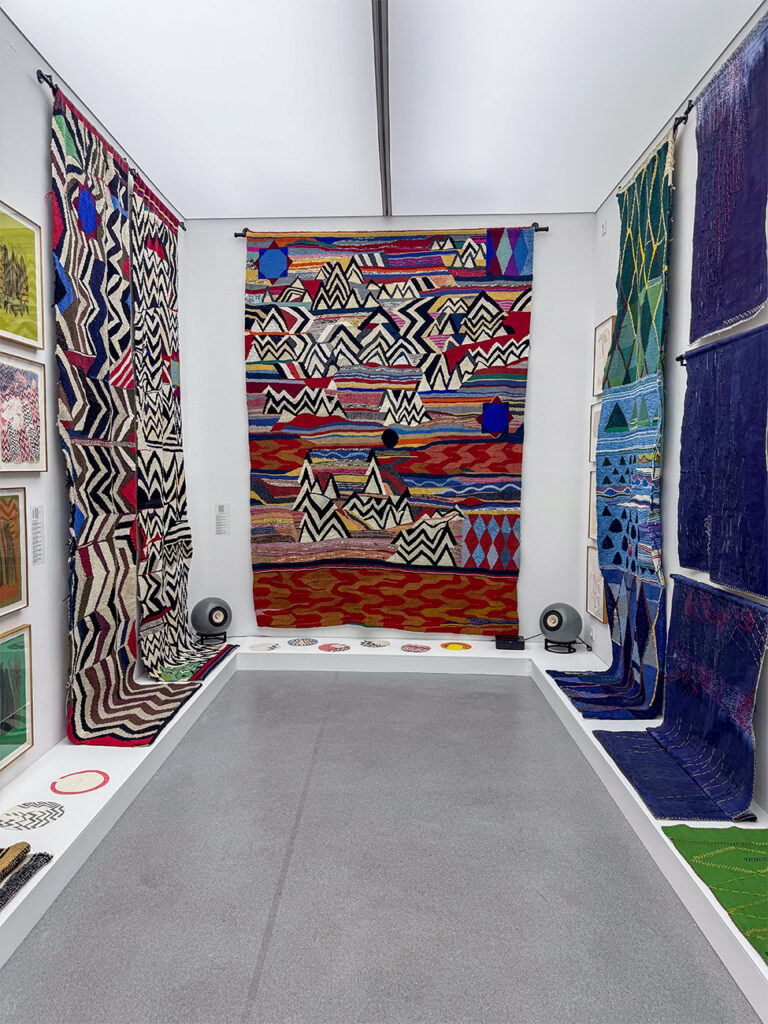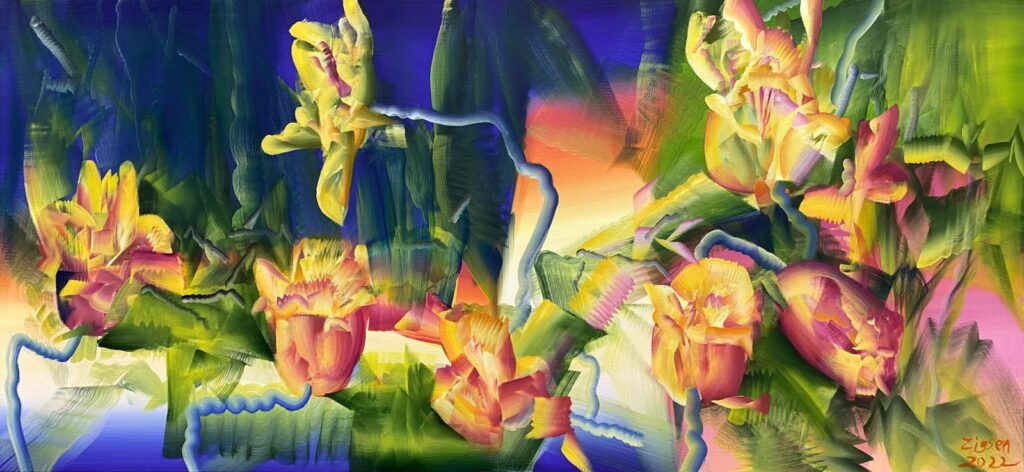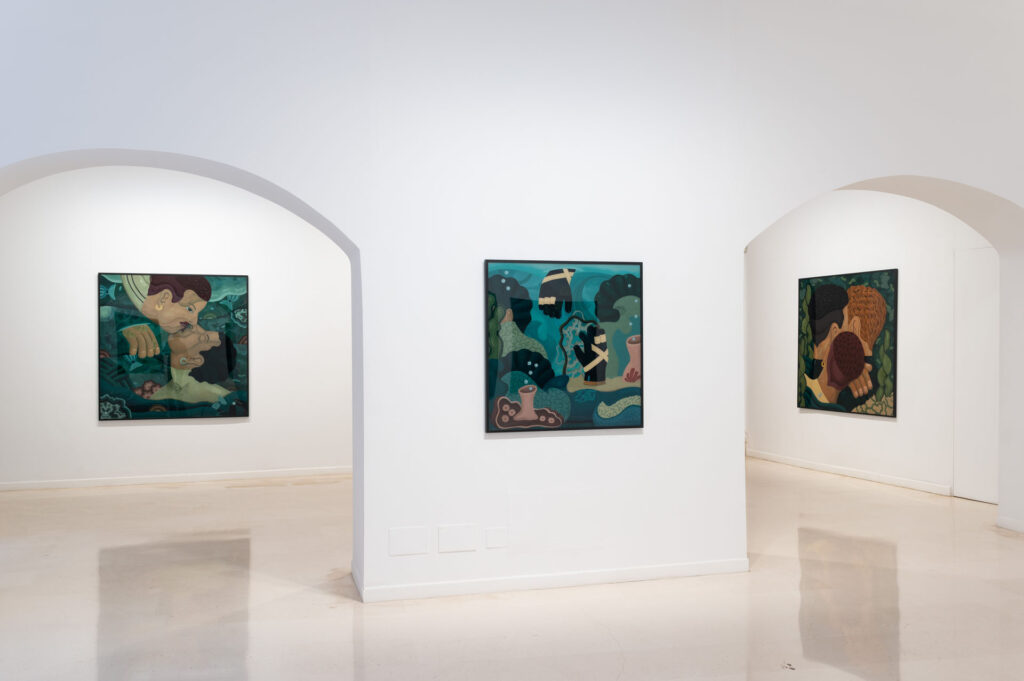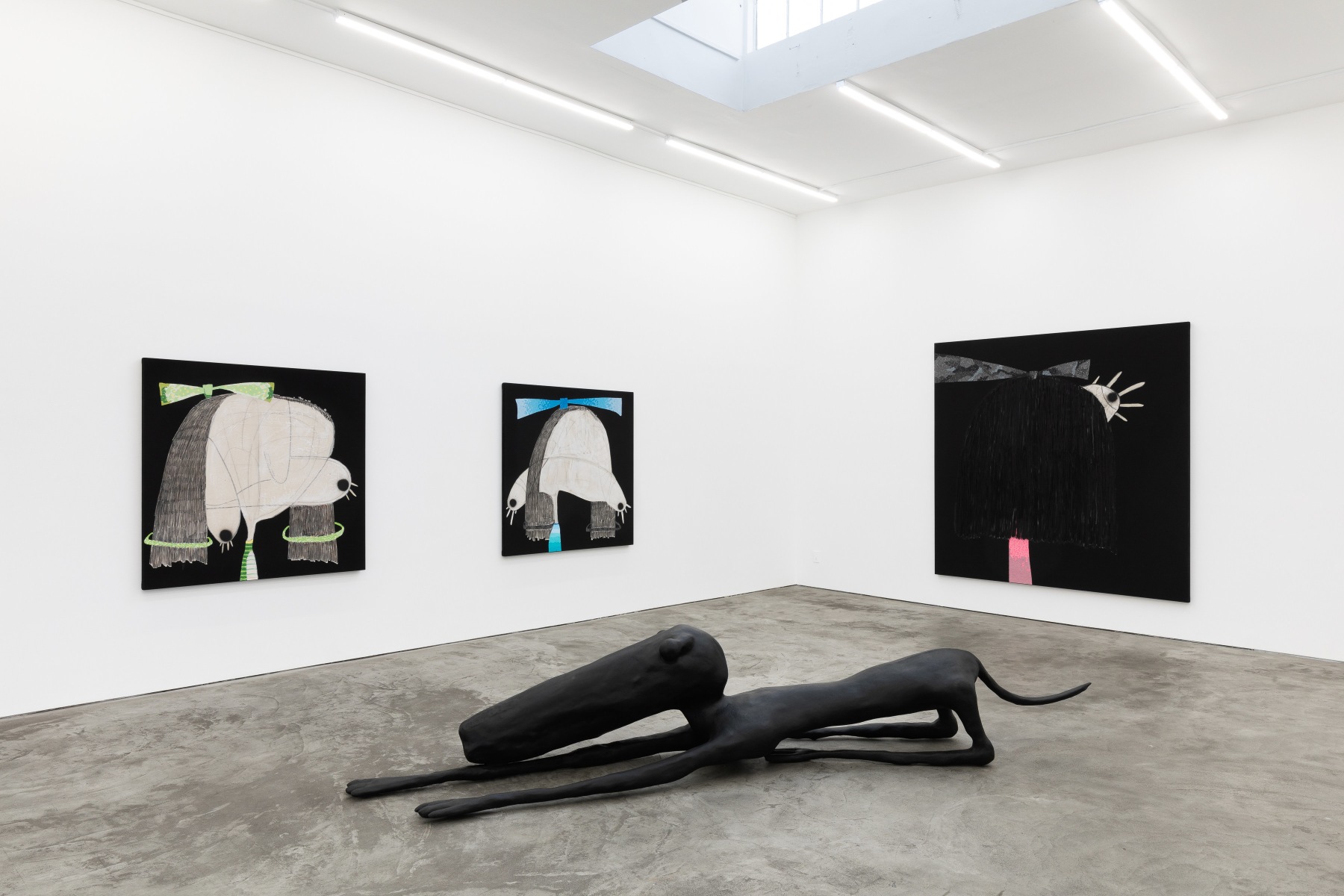The 2025 edition of CAN Art Fair in Ibiza brings together a vibrant mix of contemporary art from around the world in an atmosphere as inspiring as the island itself. Known for its focus on emerging voices and fresh perspectives, CAN continues to be a highlight of the summer art calendar. This year’s fair features a compelling lineup of galleries pushing creative boundaries. In this article, we take a closer look at four standout participants making waves at the fair. From bold curations to rising talents, these galleries offer a glimpse into the pulse of contemporary art today.

Installation View of TERESA LANCETA, LA CÓLCEDRA AL FILO DEL ALBA (25.01 — 15.03.2025), 1 Mira Madrid Gallery, Madrid
1 MIRA MADRID
1 Mira Madrid is a contemporary art gallery founded in 2019 by artist and curator Mira Bernabeu. Located in Madrid’s Lavapiés district, the gallery is dedicated to exploring the image as a formal and expressive resource in contemporary creation. Its program emphasizes critical engagement with societal issues, showcasing works that challenge pre-established concepts through various media, including photography, video, installation, and performance. The gallery represents a diverse roster of artists whose practices address the study of the image from multiple perspectives.
Teresa Lanceta (b. 1951, Barcelona) is a Spanish artist renowned for her pioneering work in textile art. Since the 1970s, she has utilized weaving as her primary medium, blurring the boundaries between art and craft. Lanceta’s practice delves into the traditions and ways of life associated with weaving, engaging in dialogues with various cultures, including the Romani communities and Moroccan nomadic weavers. Her work encompasses tapestries, paintings, drawings, and theoretical writings, reflecting a deep interest in the material and technical aspects of textile creation.
Lanceta’s contributions to contemporary art have been recognized with numerous accolades, including the Premio Nacional de Artes Plásticas in 2023. Her works have been exhibited in prominent institutions such as the Museo Nacional Centro de Arte Reina Sofía in Madrid, the Museu d’Art Contemporani de Barcelona (MACBA), and the Institut Valencià d’Art Modern (IVAM). She has also participated in international biennales, including those in Venice, São Paulo, and Cairo.
Through her innovative approach to textile art, Teresa Lanceta continues to influence contemporary artistic discourse, emphasizing the significance of weaving as a universal language and a means of cultural expression.

Installation View of Rafa Macarrón, The Girls (January 15 – February 11, 2022), Gallery Two, Nino Mier Gallery, LA
NINO MIER
Nino Mier Gallery, established in Los Angeles and now operating in multiple international locations, is recognized for its commitment to contemporary figurative and expressionist art. The gallery showcases a diverse roster of artists who explore themes of identity, memory, and the human condition through various mediums and styles.
Mai Blanco is known for her introspective works that delve into themes of identity and transformation. Her recent exhibition, “I Crave To Be All,” presented at Nino Mier Gallery in SoHo, featured installations that reflect on personal and collective experiences.
Jorge Galindo (b. 1965, Madrid) is a prominent Spanish painter whose large-scale canvases combine expressive brushwork with collage elements. His works often feature floral motifs and are characterized by a dynamic, gestural style that evokes a sense of movement and vitality. Galindo has exhibited internationally, including at the Hamburger Bahnhof in Berlin and the Museo Nacional Centro de Arte Reina Sofía in Madrid.
José Lerma (b. 1971, Sevilla) is a multimedia artist focusing on portraiture that interrogates historical and political narratives. His textured paintings often incorporate custom-mixed acrylics to create a distinctive impasto effect. Lerma’s work has been featured in institutions such as the Museum of Contemporary Art in Chicago and the Whitney Museum of American Art.
Rafa Macarrón (b. 1981, Madrid) is a self-taught artist whose vibrant, surreal compositions depict whimsical humanoid figures. Influenced by his background in physiotherapy, Macarrón’s works blend anatomical precision with imaginative abstraction. He has exhibited at venues like CAC Málaga and La Nave Salinas.
Jansson Stegner (b. 1972, Denver) creates figurative paintings that often feature exaggerated depictions of limbs, drawing inspiration from artists like El Greco and Goya. His works explore themes of power and vulnerability, frequently portraying uniformed figures in stylized poses.
Mònica Subidé (b. 1974, Barcelona) produces dreamlike paintings that merge figuration with abstract elements. Her recent works incorporate vibrant palettes and depict figures in lush, natural settings, reflecting a shift towards more dynamic compositions.
Jonathan Wateridge (b. 1972, Lusaka) is known for his cinematic paintings that blend realism with constructed narratives. His works often depict isolated figures in meticulously staged environments, exploring themes of identity and disconnection. Wateridge’s paintings are part of collections such as the Saatchi Collection and the Pinault Foundation.
Nino Mier Gallery’s program reflects a trend towards expressive figuration and narrative depth, showcasing artists who challenge traditional boundaries and engage with contemporary themes through innovative practices.

Zigsen Liu, Blossom, 2022
FUTURE
Future Gallery, based in Berlin, is a contemporary art space known for its focus on artists who explore the intersections of technology, identity, and materiality. The gallery supports interdisciplinary practices that challenge traditional art forms, reflecting on the evolving relationship between humans and digital culture.
Amalie Jakobsen (b. 1989, Copenhagen) is a sculptor whose work examines organic forms and their relation to contemporary issues. In her 2023 exhibition “Exoskeleton” at Future Gallery, Jakobsen presented metal sculptures inspired by ancient animal skeletons, exploring themes of infinity and human vulnerability in the face of climate change. Her practice involves laser-cutting metal into skeletal patterns, which are then bent and painted to create looped structures symbolizing continuity and transformation.
Vickie Vainionpää is a Canadian artist known for her generative oil paintings that merge code and traditional painting techniques. Her works feature biomorphic forms created through algorithms, resulting in abstract compositions that explore the relationship between technology and the human body. Vainionpää’s recent series, “Gaze Paintings,” utilizes eye-tracking data to map viewers’ gaze patterns, translating them into curvilinear shapes that reflect on perception and viewership.
Kévin Bray (b. 1989, Corbie, France) is an interdisciplinary artist whose practice spans video, painting, sculpture, and sound design. His 2021 solo exhibition “Wheels, Wills, Wells” at Future Gallery showcased works that blend various media to comment on communication strategies and the construction of narratives. Bray’s approach involves reconfiguring mediums to create symbolic narratives that reflect on contemporary existence and the influence of technology on human perception.
Zigsen Liu (b. 1992, Anqing, China) is a painter whose work delves into the effects of digital technology on human identity and perception. In his 2024 exhibition “Meet on the Edge” at Future Gallery, Liu presented oil paintings that explore themes of alienation and the dissolution of boundaries between the virtual and the real. His compositions often feature surreal landscapes and architectural forms, reflecting on the interplay between construction and decay in the digital age.
Future Gallery’s program reflects current trends in contemporary art that emphasize the integration of digital technologies, interdisciplinary approaches, and critical engagement with ecological and societal issues. The gallery continues to foster innovative practices that challenge conventional art forms and provoke thoughtful discourse on the human condition in the digital era.

Installation View of Gori Mora, Being in Touch (November 30 – March 15, 2025) Pelaires Gallery, Palma
PELAIRES
Galería Pelaires, established in 1969 in Palma de Mallorca, is one of Spain’s most enduring contemporary art galleries. It has consistently championed both emerging and established artists, with a focus on conceptual, figurative, and experimental practices. The gallery has played a pivotal role in introducing avant-garde art to the Balearic Islands and remains a key participant in international art fairs..
Gori Mora (b. 1992, Mallorca) explores queer identity, desire, and digital intimacy through oil paintings on acrylic sheets. His technique—painting in reverse on methacrylate—creates a screen-like effect that reflects on the mediated nature of contemporary relationships. His exhibitions at Pelaires, including Layering Intimacy (2022) and Being in Touch (2023–24), delve into themes of melancholy and fragmented connection in the digital age.
Francesc Rosselló (b. 1994, Vilafranca de Bonany) constructs vibrant, narrative-rich paintings that blend personal memories with surreal elements. His 2023 solo exhibition at Pelaires, 5 minutos más y ya vuelvo, featured acrylic works depicting intimate scenes infused with humor and nostalgia, reflecting on everyday life and emotional states.
Nicholas Woods (b. 1971, Virginia, USA) employs materials like urethane, oil, and pastel to create layered, large-scale works that explore identity, nature, and American cultural narratives. His 2021 exhibition A l’ombra del Tomir at Pelaires showcased textured paintings that juxtapose human figures with natural elements, emphasizing process and materiality.
Mònica Subidé (b. 1974, Barcelona) is known for her dreamlike paintings that merge figuration with abstraction. Her works often depict figures in lush, natural settings, exploring themes of identity and transformation.
Pau Aguiló (b. 1980, Mallorca) creates works that delve into the interplay between memory and landscape. His paintings often feature muted palettes and layered textures, reflecting on the passage of time and the essence of place.
Ramiro Oller (b. 1950, Mallorca) is a multidisciplinary artist whose practice encompasses painting, sculpture, and installation. His works often explore the relationship between form and space, drawing inspiration from the natural environment of the Balearic Islands.
Galería Pelaires continues to foster contemporary dialogues by presenting artists who engage with themes of identity, memory, and the human condition, reflecting the gallery’s commitment to both local and international art scenes.

